An article written for inclusiv.ro in 2020
A text about Bucharest in 2057, when my son will be my current age.
All photographs were taken by Stefan Tuchila as part of the Ultimul Etaj project.
Dear son,
You have won the elections… Congratulations! May it be a momentous occasion.
Somehow, we expected this outcome. Since you were little, I wondered what it would be like for you to one day rise to the leadership of this city that I have cherished so much, that I left behind and rediscovered much later: chaotic, dynamic, and challenging.
In essence, the signs were already present. One summer morning, when you were still in diapers, you went out on the 7th floor terrace of our apartment and proclaimed, “Today, I am the mayor! Come to my office,” and you invited us to the back of the terrace, determined, in your red t-shirt. We laughed, but somehow it felt fitting. You were only two and a half years old, and we were still living on Splai, in the “block of flats with the gods,” where the Dâmbovița River flowed sadly through a canal lined with concrete walls.
Now you have reached the age I was that day. Much has changed in the meantime. I wonder what changes you will bring.
It is widely acknowledged that the future lies in the densification of urban living, in cities, of course. Ultimately, urban life is the most efficient, with shorter commutes and a direct correlation between size and diversity: the larger the city, the more opportunities it offers to all its residents – entertainment, culture, employment, education.
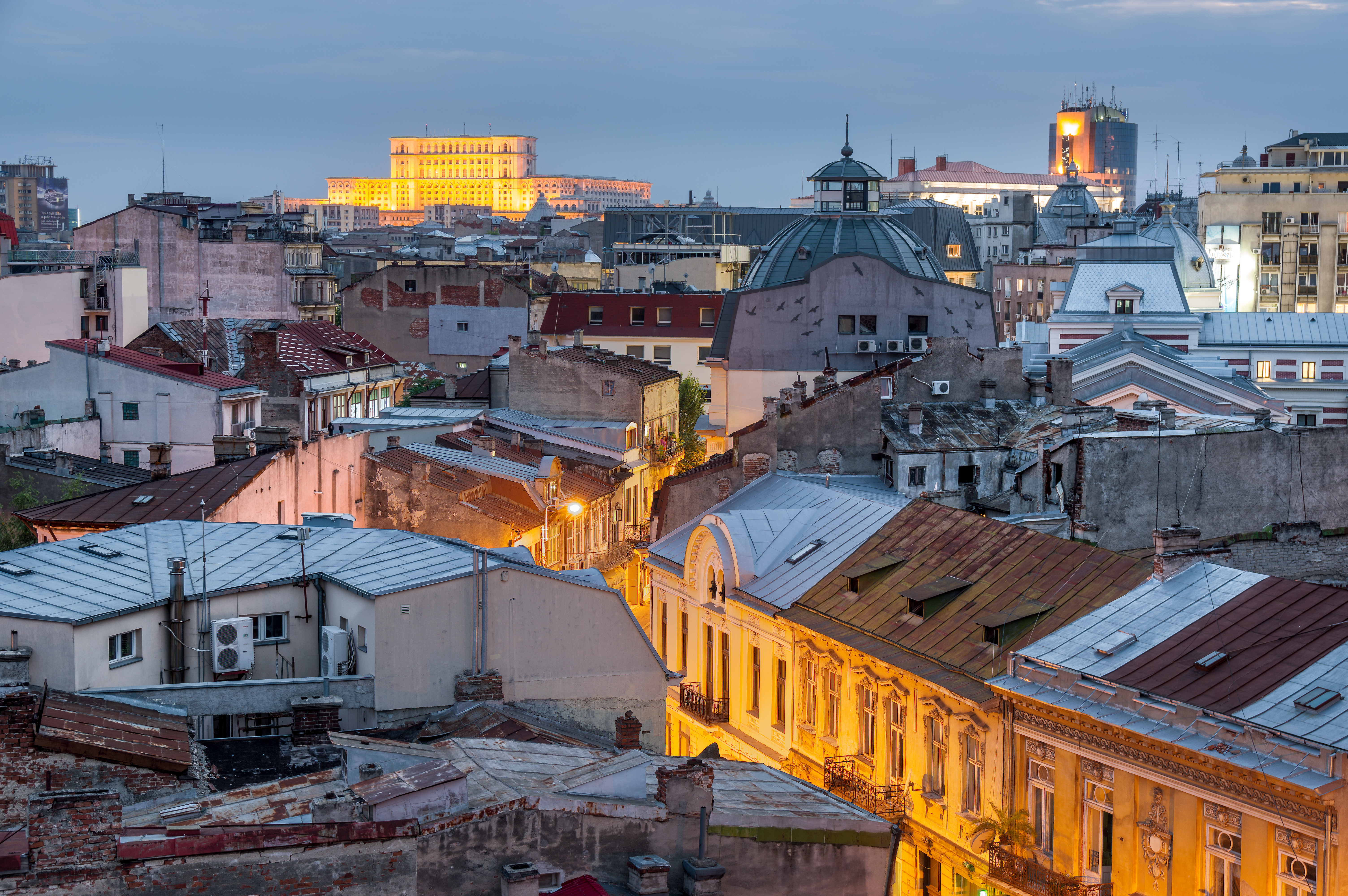
This is the allure of large cities. A metropolis can afford a myriad of establishments, a botanical garden, a university, an opera house, and an excellent public transportation system. However, a metro system is not financially viable for cities with less than a million inhabitants. It is a costly investment that requires a critical mass of users to ensure economic sustainability. As more people rely on public transportation, it becomes increasingly cost-effective. The tram serves as a prime example, being a traditional electric means of transport. If the number of passengers diminishes, the maintenance costs escalate, and neglect becomes more prevalent. If the threshold drops below a certain point, it becomes unaffordable, leading to a scenario where everyone resorts to private cars.
It is often said that a city functions as an efficient organism, but this statement holds true only when it is managed correctly. Ineffectual administration results in public distrust, corruption, political instability, and, ultimately, economic decline and poverty. It perpetuates a vicious cycle, giving rise to vulnerable segments of the population that depend heavily on local governance and become more susceptible to abuses.
Given this context, it is unsurprising that the level of aggression increases in direct proportion to the complexities citizens face when attempting to access basic services. That is why most cities consistently ranking in the top 10 for quality of life statistics are located in Switzerland and Germany, while Bucharest traditionally occupies a place in the lower half of the spectrum.
Vienna and Zurich have been vying for the top spot for years, cities where navigation is seamless and citizens have faith in their local authorities, who, in turn, treat them with respect and attentiveness. They serve as exemplars of good governance, often fostering citizen participation. Residents of various neighborhoods actively contribute to decision-making processes and the city’s overall functioning, alongside professionals, while administrative decisions are made transparently. In Bucharest, civic initiative groups emerged from conflicts of interest between municipal administrations and citizens, dating back to 2010.
As you assume the role of mayor in 2057, I hope you will strive to bring about positive change in Bucharest. Lead with integrity, inclusivity, and a vision for a city that places the well-being and aspirations of its residents at the forefront. Embrace participatory governance and transparency, working towards creating an environment where people can thrive, discover opportunities, and live fulfilled lives.
I have unwavering confidence in your ability to make a difference. Remember to lend an ear to the voices of the people, collaborate with experts, and exhibit courage in your decision-making. Bucharest possesses immense potential, and under your guidance, it has the opportunity to become a city that we can genuinely take pride in.
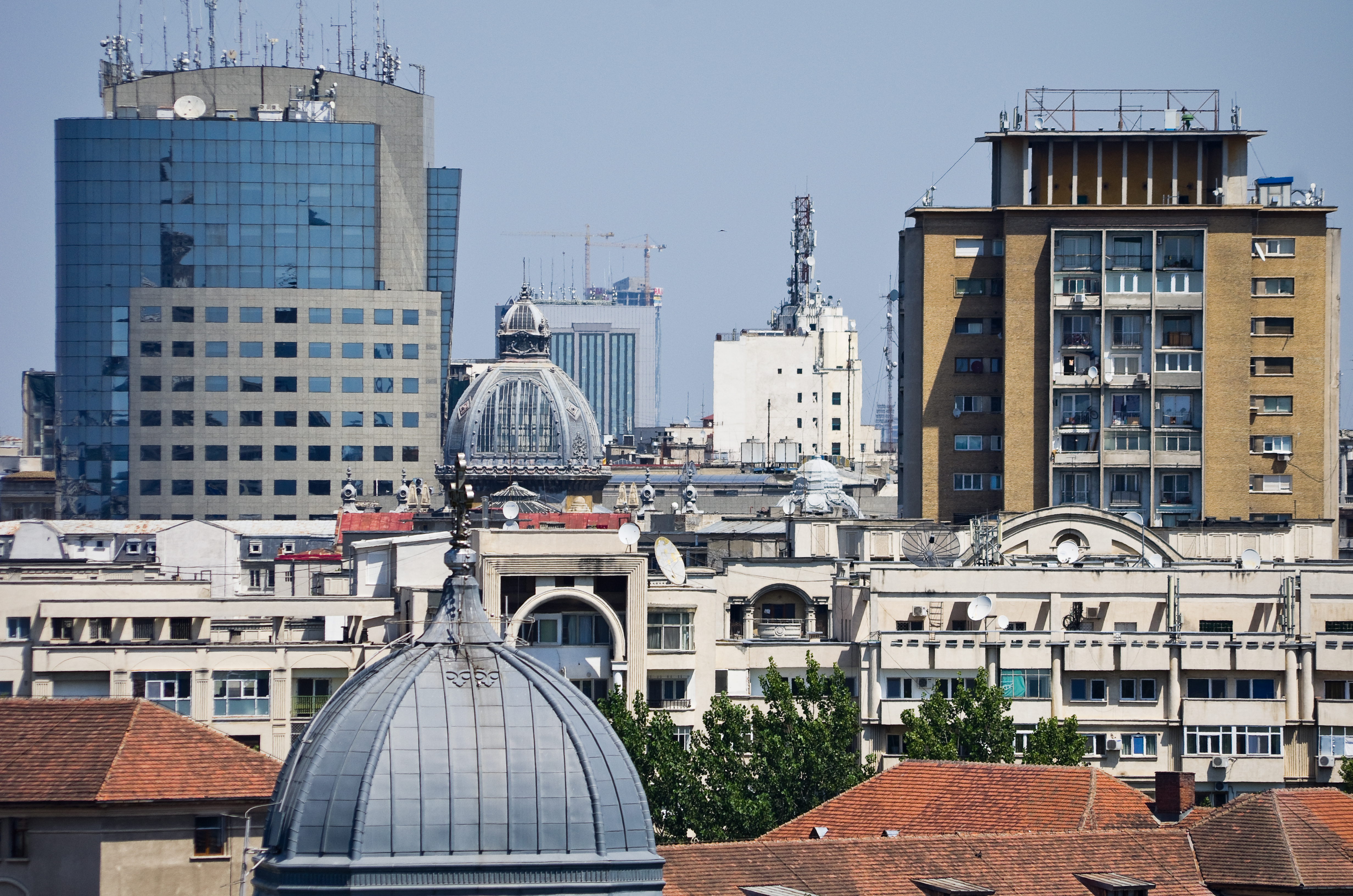
© Ștefan Tuchilă, ultimul Etaj
When the last major earthquake struck in 2027, you were 10 years old. The administration monumentally failed to cope with the disaster, resulting in a significant increase in casualties, similar to what happened during the Colectiv nightclub fire in 2015, two years before you were born, where more people died in hospitals than in the actual fire. Since then, Bucharest residents have learned, and civil society has organized itself better, getting involved in preparedness operations for diseases and response to earthquakes.
The 2020s were a turbulent decade: it began with the Covid-19 pandemic and continued with the rise of far-right movements, as if Europe had grown tired of the hard-won democracy in the East, gained just 30 years earlier. From France to Poland and from Hungary to Germany, many people’s expectations had been disappointed, and the new extremists flagrantly trampled upon the rights of minorities, women, and vulnerable groups. However, they eventually learned, albeit reluctantly after violent protests, that cities must first and foremost be communities: a city without people would not exist.
For a long time, our city had been renowned abroad for its unique dynamism, the opportunities it offered to everyone, the affordability of drinks, and the rich social life. It was like a paradise city, much like Brecht’s Mahagonny, “a place of pleasures where no one works, everyone drinks, plays, fights, and goes to prostitutes; all that matters is whether you can afford the services.”
Tolerance for different opinions and diverse lifestyles, as well as relative social security, declined over time as the city was increasingly mismanaged and temperatures rose. This was reflected in the numbers: after 1992, the illusion no longer held, and the population began to decline towards 1.8 million inhabitants.
The 30 years following the collapse of the totalitarian regime in which I grew up felt like an eternal transition. My generation aged, waiting for something that never happened. Back then, the streets were so crowded every day of the week that you would think no one was working in the office buildings constantly being constructed by real estate developers.
Unexpectedly, in 2020, the pandemic arrived and changed everything. Unfortunately, it is during challenging times and catastrophes that we truly learn and grow, not during easy situations. With each earthquake, fire, and pandemic, people learn to build safer, introduce safety and hygiene standards, and modernize infrastructure, rethinking urban regulations and adapting them to current life, much like they did in the Middle Ages, placing fountains at every important crossroads.
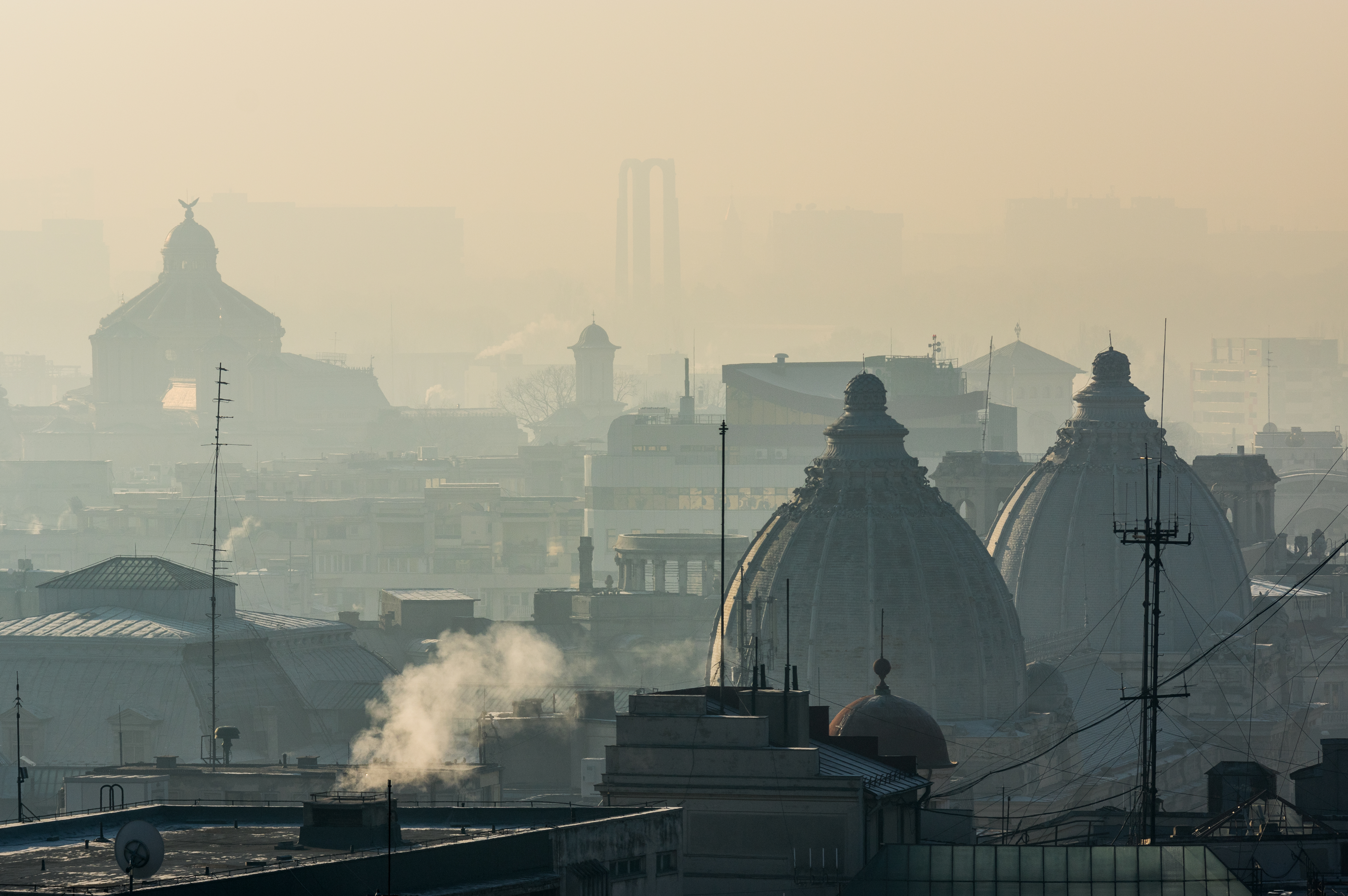
© Ștefan Tuchilă, ultimul Etaj
Slowly, the climate changed everywhere: in Bucharest, the average temperature increased by a few degrees, fueled by continuous traffic congestion and, especially, the “trimming” of trees. Once their cool shade was replaced by air conditioners dripping on the heads of passersby from April to October, making summers harder to bear, Bucharest residents became climate migrants, seeking refuge in the mountains for four months of the year. However, the suffocating flow of cars did not decrease because people understood something, but only after reaching a crisis: frustrated by the continuous traffic jam on the DN road, people from Prahova County started setting fire to large black cars with a “B” license plate. That’s why the Băicoi-Brașov tunnel was dug, and the Pitești-Sibiu highway was finally built, connecting Muntenia with Transylvania.
A city from which anyone can afford to escape the heat becomes semi-deserted for a third of the year – and suffocated by cars for the rest of the time. Many establishments cannot cope with this fluctuating influx and end up closing their doors forever, impoverishing the culinary landscape. You can no longer go to “the Chinese place on Occidentului Street,” “the Frog,” “the Turkish restaurant on Viilor Street,” or “the Russian spot”; you end up ordering everything online. But you didn’t go out to the city just for food, but for entertainment, to meet people. However, people stopped going out too since the pandemic. Along with the disappearance of restaurants, taverns vanish as well, and if you don’t go out anymore, another reason to stay in Bucharest disappears. Then you could stay in another city that offers you more.
Why struggle in a capital city that has been deteriorated by so many incompetent and greedy administrations, with insufficient parking spaces, buildings at risk of collapse, closed or overcrowded nurseries and schools, neglected parks overrun by concerts and festivals that terrorize entire neighborhoods with their decibels? For a while, people worked from home, then they realized that things wouldn’t change anytime soon and that it was preferable to move to a smaller city that, however, functioned better.
Understanding this, those who could, left for Cluj, Iași, or Constanța, where services were cheaper, green areas were closer, and they offered peace and tranquility. What’s the point of a “Green Village” for which you had to cross the city in infernal traffic? You spent hours in the car that you could have spent with your loved ones. And you arrived home completely aggressive – “so many hysterical people in traffic today!” You had become one of them yourself.
In the smaller city, your income might have been slightly lower – but everything was cheaper and more accessible – so practical! Traveling less and more thoughtfully, people brought home lifestyles that no longer fit the “more is more” and “the law is for fools” mentality of the 2010-2020 years. Adversity towards opulence, combined with new sanitary norms, gradually led to profound changes in urban living.
When the pandemic broke out and people were forced to stay in their homes during the first lockdown from March to May 2020, Bucharest residents began to discover their proximity. At that time, I was curating the Street Delivery event, which had been taking place for 15 years on Verona Street, which aimed to transform it into a green, pedestrian axis from east to west. Due to the new regulations, that year the event was divided into islands throughout the city, and its theme was called “ReSolutions.” Projects that proposed the improvement of the space around homes were awarded.
By autumn 2020, some of these small projects had grown, taking root and then being replicated in other neighborhoods. Gradually, flower beds and beehives appeared on the rooftops of many buildings, first around Cișmigiu Park and in the gardens of the Dorobanți neighborhood, then in Pantelimon and Militari – even though we were the only European capital where beekeeping was not encouraged, but explicitly prohibited. This was absurd because urban honey is actually cleaner than “rural” honey since bees can filter out pollutants but not pesticides from the environment. Paradoxically, some of the first guerilla gardeners were actually employees of the Parliament Palace, who had planted a small vegetable garden in its courtyard.
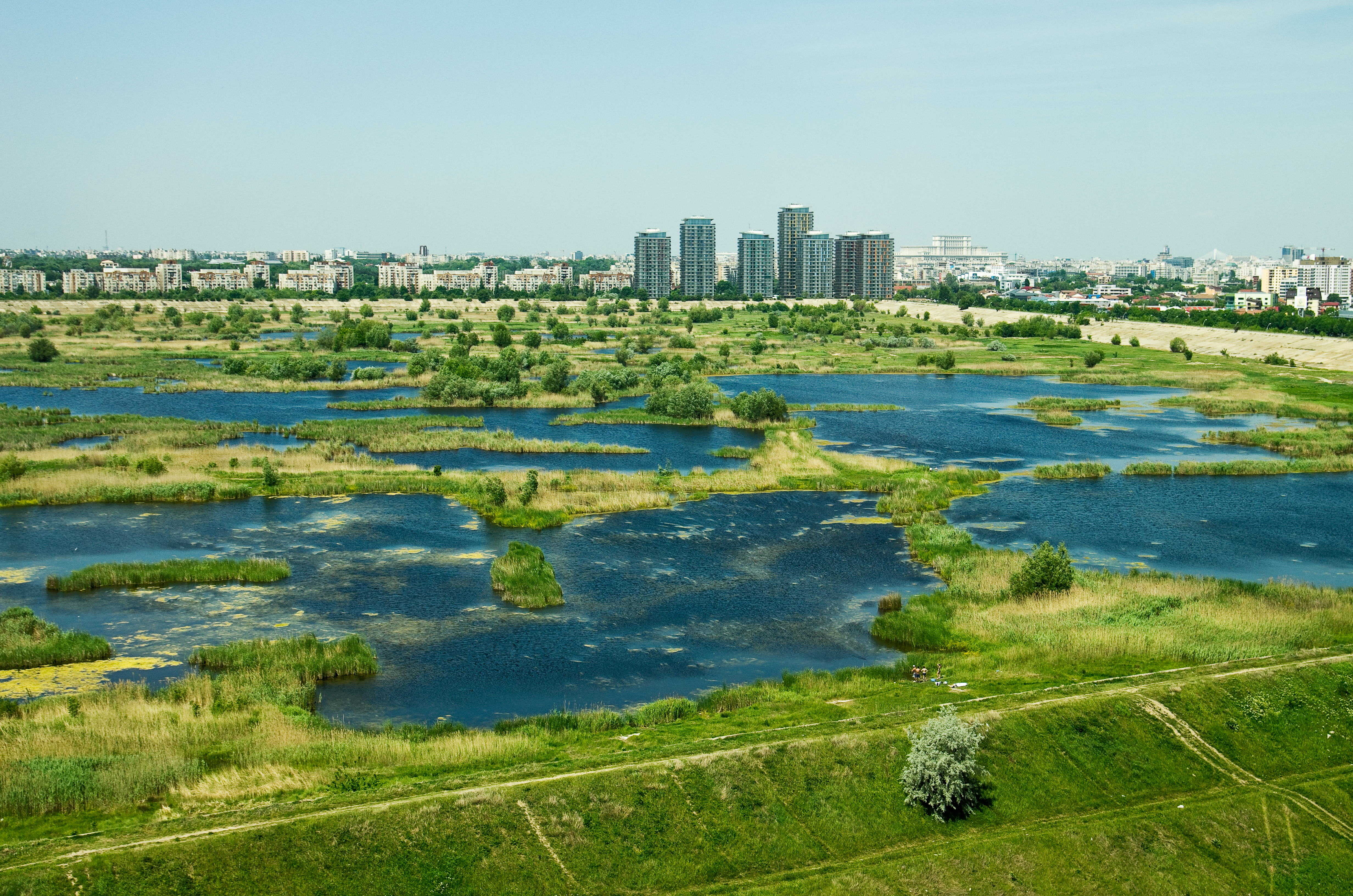
The pandemic in 2020 accelerated some changes that had already been underway for some time. Among them was the reconsideration of urban space. First, malls fell out of use, those large, rare places where people used to cram together – they reminded the population of the consumer frenzy that followed the poverty of the 1980s. In some neighborhoods, there were hardly any commercial spaces at all – that’s where the appearance of pop-up markets was supported, held for two or three days a week, like the one at the University corner where we used to go on Thursdays and Fridays, with you in the stroller and later on bicycles, to buy blackberries, quinces, and cheese.
Sidewalks were widened, and the importance of cars, which had reached a number equal to the population in 2021, diminished. They congested the streets from Monday to Friday and mysteriously disappeared on weekends. The ostentatious and heavy SUVs, which could block multiple parking spaces at once, went out of fashion. They had become status symbols that no one could afford to buy with their salaries. Wasting resources had become the mark of parvenus from bygone times. “Small is the new big,” every child knew by then, and children became more resourceful than their parents and grandparents, preferring experiences over material wealth.
Temporary pedestrianization was introduced: on many streets, car traffic was prohibited in the evenings, which encouraged local businesses in the neighborhoods. Gradually, people finally began to perceive public space as belonging to everyone, not to no one, so tall fences went out of style. A street with 3-meter fences became a road between battlements, not pleasant at all, and it made you wonder, “What important thing do they have to hide here?”
Then, a belt of greenhouses and community gardens grew around the city, which could be rented annually to grow vegetables close to home. Small streets shaded by pines and oaks became trendy again. It was easy to navigate through our city; signs and infographics were placed everywhere in the hope that tourists who once came for cheap drinks would return for the quality of services.
People understood that shade provided coolness, not air conditioners that heated the surroundings and wasted energy. Thus, buildings were equipped with facade blinds and brise soleil. Inspired by the Greek city model, city officials introduced the “Umbrella” program – a cheap solution that turned apartments into greenhouses and standardized facades, instead of the thermal insulation programs that had struggled to take off in the 2010-2020 period.

To decongest the streets and create socializing spaces close to home, ground floors of apartment buildings were transformed into neighborhood shops and parking spaces. Trees were planted on both sides of the streets, and small parks were created at every possible intersection, reclaiming spaces previously occupied by cars. Now you have access to green spaces on every street corner; there’s no need to travel to a park. Seniors and mothers with young children were the first to benefit from these improvements.
With the opening to the Greek city model, suitable for the arid climate of the steppe region where Bucharest is located, other lessons were learned from the Hellenic experience, where the capital clearly set the tone: Athens was already one of the most densely populated cities in Europe, growing from 4,000 inhabitants gathered around historical ruins in 1833 to 3 million in 2020.
To accommodate the wave of Greek immigrants from Asia Minor starting in 1920, the Athenians invented and endlessly replicated throughout the city the “polikatoikia,” a type of building with 4-7 floors and a simple concrete structure, which now represents the overwhelming majority of buildings in Greek cities. The initial constructions adhered to urban planning rules and were pleasant, with sufficiently high ceilings, 100 square meter apartments, and friendly balconies. However, after the 1960s, the quality of construction began to decline in favor of profit.

We hoped not to repeat the mistakes of Athenians: prioritizing the interests of real estate developers, ignoring urban development regulations, which led to the construction of buildings that were too close to each other and “face-to-face.” To make room for them, Athenians had demolished older, classical-style buildings.
But that was already happening here anyway, even in the “restituted” parks, now exploited for real estate purposes. Then, the almost identical reproduction of the same dull building model on every plot of land. The taller, the better! And it should be as cheap as possible! But the apartments themselves were expensive, large, residential, with an average size of 75 square meters, starting from 3 rooms upwards, contradicting the needs of Bucharest residents for smaller and more affordable housing. My generation had already made this mistake.
Only the fetishization of historical substance remained, the principle on which Athens had built its entire modern identity. Due to lack of interest and education, and because of the unclear property situation, Bucharest residents had neglected their heritage for decades – or what was left of it after the communist systematization and demolitions. And now they risked jumping to the opposite extreme, transforming the facades of the 1980s apartment blocks into fake Art Deco.
In essence, Bucharest had much in common with Athens, its older sister in every respect. But it lacked the sea. Our capital had emerged in the midst of the semi-arid Bărăgan Plain, on a fold of land eroded by the Dâmbovița River, as a marketplace at the crossroads of commercial routes between the Levant and Western Europe. The local climate had always been relatively harsh, with temperature extremes, even before the climate crisis, compared to most settlements in the region that were located “below the mountains” or closer to larger, navigable waters.
Over time, the city continued to grow, most significantly during the industrialization period when it tripled in size between 1912-1948, surpassing 1 million inhabitants. Then, it experienced another wave of growth after 1966, with the forced centralization by the communists, reaching over 2 million residents in 1992.
© Ștefan Tuchilă, ultimul Etaj
Like Athens, the city had developed without consistency, without harmony in the mix of architectural styles and forms, many of which contradicted each other from the moment they appeared (such as the traditional Neo-Romanian style with liberal modernism at the end of the 19th and early 20th centuries). Growing rapidly and with changing administrations that didn’t manage to complete the projects they started, the city had been hit by various urban plans, all of which were initiated but never fully executed.
Thus, chaos and urban heterogeneity became ingrained here, reflected in the way architectural styles blend and details from “Little Paris” coexist with a little Moscow and a small Istanbul. Each person did as they saw fit, enclosing balconies, personalizing facades, erecting fences where it seemed convenient. It wasn’t until after the pandemic in 2020 that open balconies reappeared, after being used as storage spaces for so long. After all, the balcony is what provides shade to the sidewalks and facade and offers a semi-public space where you can interact with others – and during lockdown, without the risk of infection (at that time, it was called social distancing).
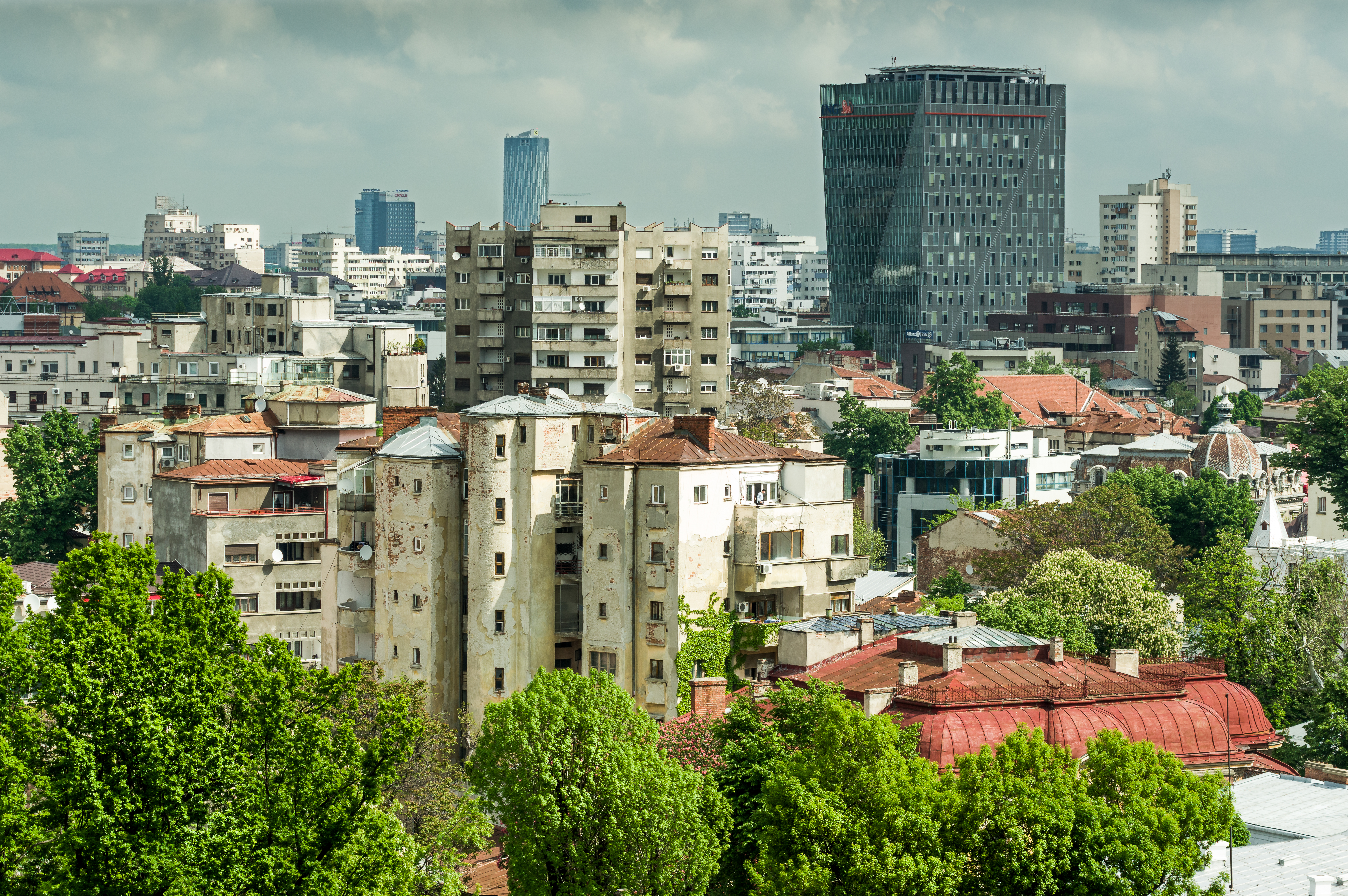
And the river, the ancient Dâmbovița, on whose banks the city was founded, became the absolute center of interest. In a competition organized by the Architects’ Association in 2020, the winning project proposed a series of bridges that moved the action from the city center directly onto the river, transforming the industrial canal-like banks hastily created in the 1980s into genuine sloping gardens.
Water became the essential theme of the capital: swimming pools, recreational areas, and especially drinking fountains are now everywhere! Today, nobody would buy bottled water from a store as we used to. Single-use plastic had become absurd, and the European Union had banned its use since 2019 to protect rivers and seas.
The city’s natural springs, such as Bucureștioara, were rediscovered. In parks, public toilets with water were reintroduced, converted into restaurants after the 1990s. With the new administration elected in 2020, everyone understood what a business private contracts for public toilets had been, inappropriately labeled as “eco.”
When the pandemic hit and people were required to stay at home during the first lockdown from March to May 2020, Bucharest residents began to discover their sense of proximity. At that time, I was curating the Street Delivery event, which had been taking place on Verona Street for 15 years. The event aimed to transform the street into a green pedestrian axis from east to west. However, due to the new regulations, the event that year was divided into islands throughout the city, and its theme was called “ReSolutions.” Projects that focused on improving the spaces around homes were awarded.
By the autumn of 2020, some of these small projects had flourished and started to spread to other neighborhoods. Gradually, rooftops of many buildings became adorned with layers of flowers and beehives, first around Cișmigiu Park and in the gardens of the Dorobanți neighborhood, and later in Pantelimon and Militari. Interestingly, Bucharest was the only European capital where beekeeping was not encouraged; in fact, it was explicitly prohibited. This was absurd because urban honey is actually cleaner than “rural” honey since bees can filter out pollutants but not pesticides from the environment. Paradoxically, some of the first guerilla gardeners were employees of the Parliament Palace, who had planted a small vegetable garden in its courtyard.

The pandemic in 2020 expedited changes that had been brewing for some time. One of these changes was the reconsideration of urban space. Malls, once crowded and reminiscent of the consumer frenzy that followed the poverty of the 1980s, fell out of favor. In some neighborhoods, commercial spaces were scarce. As a result, pop-up markets emerged, operating two or three days a week, such as the one near the University, where I used to go on Thursdays and Fridays with you in the stroller, and later on bicycles, to buy blackberries, quinces, and cheese.
Sidewalks were widened, and the importance of cars, which had reached a number equal to the population in 2021, diminished. They congested the streets from Monday to Friday and mysteriously disappeared on weekends. The ostentatious and heavy SUVs, which could block multiple parking spaces at once, went out of fashion. They had become status symbols that no one could afford to buy with their salaries. Wasting resources had become the mark of parvenus from bygone times. “Small is the new big,” every child knew by then, and children became more resourceful than their parents and grandparents, preferring experiences over material wealth.
Temporary pedestrianization was introduced: on many streets, car traffic was prohibited in the evenings, which encouraged local businesses in the neighborhoods. Gradually, people finally began to perceive public space as belonging to everyone, not to no one, so tall fences went out of style. A street with 3-meter fences became a road between battlements, not pleasant at all, and it made you wonder, “What important thing do they have to hide here?”
Then, a belt of greenhouses and community gardens grew around the city, which could be rented annually to grow vegetables close to home. Small streets shaded by pines and oaks became trendy again. It was easy to navigate through our city; signs and infographics were placed everywhere in the hope that tourists who once came for cheap drinks would return for the quality of services.
People understood that shade provided coolness, not air conditioners that heated the surroundings and wasted energy. Thus, buildings were equipped with facade blinds and brise soleil. Inspired by the Greek city model, city officials introduced the “Umbrella” program – a cheap solution that turned apartments into greenhouses and standardized facades, instead of the thermal insulation programs that had struggled to take off in the 2010-2020 period.
To decongest the streets and create socializing spaces close to home, ground floors of apartment buildings were transformed into neighborhood shops and parking spaces. Trees were planted on both sides of the streets, and small parks were created at every possible intersection, reclaiming spaces previously occupied by cars. Now you have access to green spaces on every street corner; there’s no need to travel to a park. Seniors and mothers with young children were the first to benefit from these improvements.
With the opening to the Greek city model, suitable for the arid climate of the steppe region where Bucharest is located, other lessons were learned from the Hellenic experience, where the capital clearly set the tone: Athens was already one of the most densely populated cities in Europe, growing from 4,000 inhabitants gathered around historical ruins in 1833 to 3 million in 2020.
To accommodate the wave of Greek immigrants from Asia Minor starting in 1920, the Athenians invented and endlessly replicated throughout the city the “polikatoikia,” a type of building with 4-7 floors and a simple concrete structure, which now represents the overwhelming majority of buildings in Greek cities. The initial constructions adhered to urban planning rules and were pleasant, with sufficiently high ceilings, 100 square meter apartments, and friendly balconies. However, after the 1960s, the quality of construction began to decline in favor of profit.
We hoped not to repeat the mistakes of Athenians: prioritizing the interests of real estate developers, ignoring urban development regulations, which led to the construction of buildings that were too close to each other and “face-to-face.” To make room for them, Athenians had demolished older, classical-style buildings.
But that was already happening here anyway, even in the “restituted” parks, now exploited for real estate purposes. Then, the almost identical reproduction of the same dull building model on every plot of land. The taller, the better! And it should be as cheap as possible! But the apartments themselves were expensive, large, residential, with an average size of 75 square meters, starting from 3 rooms upwards, contradicting the needs of Bucharest residents for smaller and more affordable housing. My generation had already made this mistake.
Only the fetishization of historical substance remained, the principle on which Athens had built its entire modern identity. Due to lack of interest and education, and because of the unclear property situation, Bucharest residents had neglected their heritage for decades – or what was left of it after the communist systematization and demolitions. And now they risked jumping to the opposite extreme, transforming the facades of the 1980s apartment blocks into fake Art Deco.
In essence, Bucharest had much in common with Athens, its older sister in every respect. But it lacked the sea. Our capital had emerged in the midst of the semi-arid Bărăgan Plain, on a fold of land eroded by the Dâmbovița River, as a marketplace at the crossroads of commercial routes between the Levant and Western Europe. The local climate had always been relatively harsh, with temperature extremes, even before the climate crisis, compared to most settlements in the region that were located “below the mountains” or closer to larger, navigable waters.
Over time, the city continued to grow, most significantly during the industrialization period when it tripled in size between 1912-1948, surpassing 1 million inhabitants. Then, it experienced another wave of growth after 1966, with the forced centralization by the communists, reaching over 2 million residents in 1992.
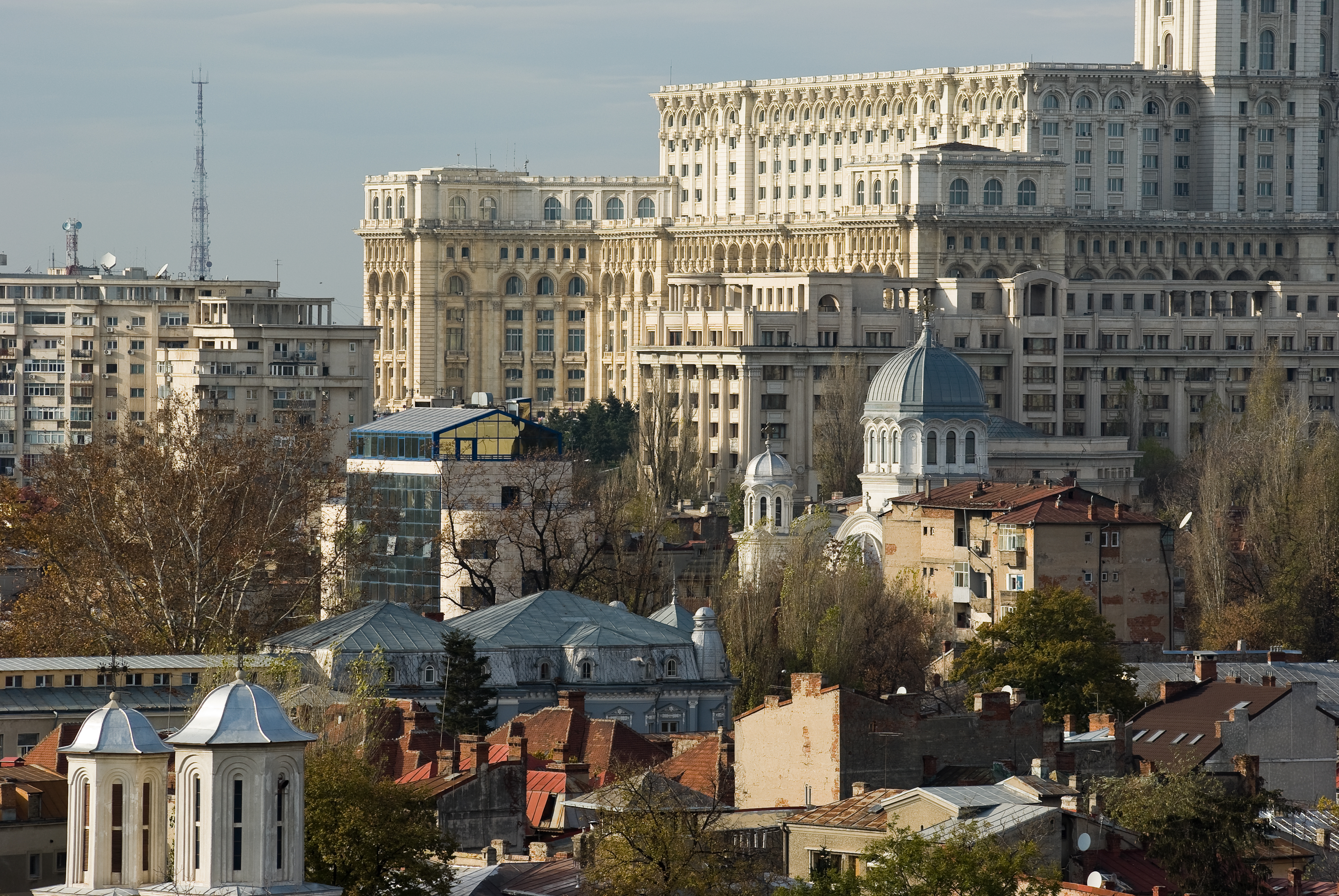
Like Athens, the city had developed without consistency, without harmony in the mix of architectural styles and forms, many of which contradicted each other from the moment they appeared (such as the traditional Neo-Romanian style with liberal modernism at the end of the 19th and early 20th centuries). Growing rapidly and with changing administrations that didn’t manage to complete the projects they started, the city had been hit by various urban plans, all of which were initiated but never fully executed.
Thus, chaos and urban heterogeneity became ingrained here, reflected in the way architectural styles blend and details from “Little Paris” coexist with a little Moscow and a small Istanbul. Each person did as they saw fit, enclosing balconies, personalizing facades, erecting fences where it seemed convenient. It wasn’t until after the pandemic in 2020 that open balconies reappeared, after being used as storage spaces for so long. After all, the balcony is what provides shade to the sidewalks and facade and offers a semi-public space where you can interact with others – and during lockdown, without the risk of infection (at that time, it was called social distancing).
And the river, the ancient Dâmbovița, on whose banks the city was founded, became the absolute center of interest. In a competition organized by the Architects’ Association in 2020, the winning project proposed a series of bridges that moved the action from the city center directly onto the river, transforming the industrial canal-like banks hastily created in the 1980s into genuine sloping gardens.
Water became the essential theme of the capital: swimming pools, recreational areas, and especially drinking fountains are now everywhere! Today, nobody would buy bottled water from a store as we used to. Single-use plastic had become absurd, and the European Union had banned its use since 2019 to protect rivers and seas.
The city’s natural springs, such as Bucureștioara, were rediscovered. In parks, public toilets with water were reintroduced, converted into restaurants after the 1990s. With the new administration elected in 2020, everyone understood what a business private contracts for public toilets had been, inappropriately labeled as “eco.”
Now, Lake Herăstrău is clean, and regular swimming competitions are held there, culminating in the big April crossing, where 300 people swim from Pescăruș to the elegant pedestrian bridge under the railway overpass.

This is how the reorganization of neighborhoods began: there are no more purely residential neighborhoods like Bercenii or strictly corporate neighborhoods like Pipera, where poor people had to commute daily. Different functions were introduced in all neighborhoods, such as parks, swimming pools, sports arenas, and summer gardens that also serve as open-air cinemas. Flexible part-time work schedules became popular, prioritizing office spaces for families and individuals who cannot work from home.
With great success, after the elections in 2024, the previous sector divisions in the form of a pizza were replaced by 20 metropolitan districts. As smaller administrative units, it became easier for the mayors to take responsibility and address local issues. There are no longer situations like before, where you had the Unirii Square in the heart of the city and the Livezilor Alley in Ferentari in the same sector, with the latter only making the news around election time.
The administration itself has completely changed. Mayors regularly walk the streets during peak hours and in all weather conditions, using public transportation, walking, or cycling, without drivers or security, to monitor the well-being of their city. They have learned that you can’t truly understand the issues of your city if you live outside of it and only traverse it in an SUV with a driver and security, as many did in the early decades of the century.
Moreover, the number of security guards has significantly decreased. The era of snobby secretaries, bodyguards who triage emergency cases, and security guards at pharmacies and grocery stores is long gone. Public service has become a respectable and respectful matter: being a public servant means serving the citizens well, not exercising control or abusing them. When good services are provided, everyone benefits.
Education underwent reform as well. Initially, due to the lack of space resulting from new sanitary regulations (pandemic!), school hours started to be held in museums, greenhouses, parks, gardens, and swimming pools. Seeing the excellent results and the need for additional staff, now with much smaller classes of 10-15 children, the changes continued. In addition to traditional teachers, professionals from different fields started teaching for a few hours a week. Working in the public service is now trendy.
The old school buildings have become community centers, with public spaces for residents, mainly used by young people but also open to seniors, with libraries and multifunctional halls. Regular earthquake response training takes place here: people have learned from the last major earthquake that hope lies in civil society, not the system.
Despite the climatic and administrative complications, or perhaps precisely because of them, Bucharest has grown into a pleasant city with diverse public spaces, realizing its significant potential.
Now let’s see what you will do with it. Good luck!
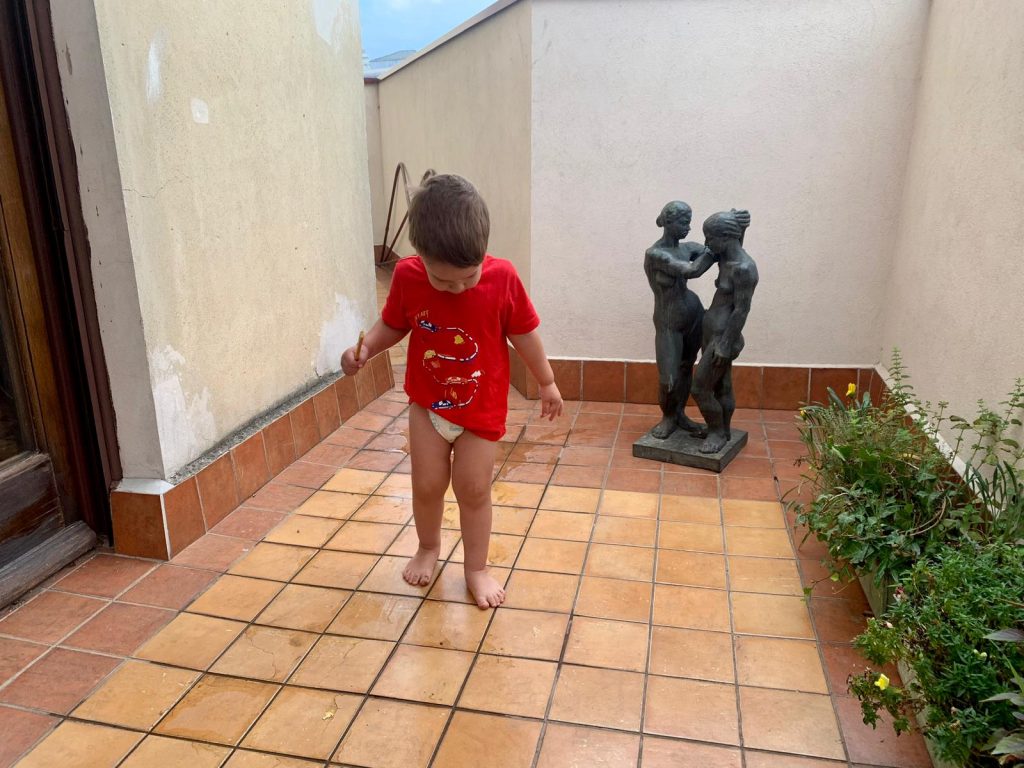


One Reply to “Bucharest, 2057”